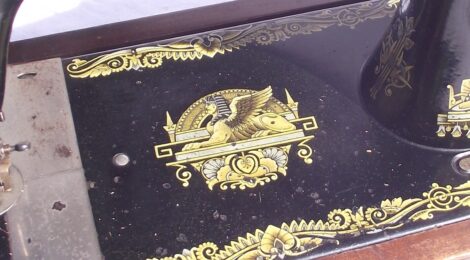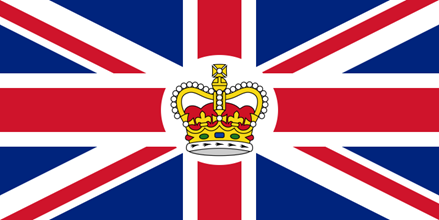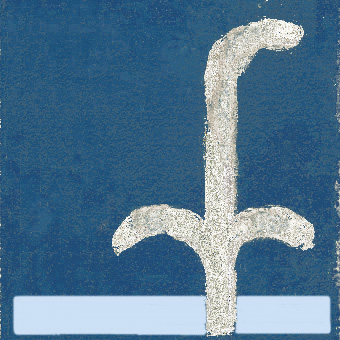
Shoes and clothes – 5
Author: Susan Biddle.
This post is the last in a series looking at clothing. This one focuses on Myrtle’s sewing, initially mostly for mending, but later also to make clothes for herself and others.
Myrtle was a competent dressmaker and enjoyed embroidery, although her work and other activities left her little time for this. On her voyage out to Egypt in October 1935 she kept busy with her embroidery, but was annoyed to find she had “not cut a piece of linen to face the front”, asking her mother to cut out a piece in the shape of an enclosed pattern and send it to her. Aware of how busy she was likely to be once she arrived in Abydos, she told her mother: “there is no hurry for it, as I do not suppose the embroidery will be finished for a long time”.
Most of her sewing was more practical. She had to have clothes to cover a wide variety of situations, including work in the Temple of Seti I at Abydos, relaxing back at the dig-house, socialising with friends, and trekking into the desert and to the coast. In the course of each season she would experience extremes of temperature, and the team might even receive visits from royalty requiring appropriately formal clothing. Myrtle “had a positive dread of luggage bothers” and always travelled with as little personal baggage as possible, so her wardrobe must have been limited and all of it probably saw much use.
It is therefore unsurprising that mending was a common task for Myrtle and Amice on their weekly “day off” right from the start. In December 1929 Myrtle was pleased to receive “a dear little mending outfit” as an early Christmas present from friends in England. Two years’ later, having got something on the hem of a pale pink silk dress which rotted the silk, she asked her mother to send her a hemmed strip of the same silk which she had left back in England, so she could mend the frock. For Christmas 1932, Myrtle gave Amice a needlework case she had made, and received in return a locally made lidded basket in red, black, and natural colours, which Myrtle thought would be “very useful for all my sewing things here”.
In October 1934 Myrtle took out to Egypt with her the Broome family’s old sewing machine, which was quickly put to good use. The Abydos team was expanded that year by the addition of a new photographer, Gertrude (Truda) Clarke, as well as another artist, Otto Daum, and two novices, Erica Pfaff and Elfie Bridson. It seems a larger dining table may have been needed to accommodate the bigger group. In early November Myrtle reported that “the sewing machine is already in use. In fact it is rattling away at this moment as Truda Clarke is sewing two tablecloths together to make a nice large one”. The following February Myrtle wrote that “the sewing machine is greatly in request & seems to do all sorts of sewing quite well”. She had fixed its propensity to miss stitches and did “not know how we could have got on without it this year”. They had used up all of the two large reels of cotton that she had bought for sewing tasks for the Egypt Exploration Society, and had had to send for more. As the team also used the machine for their own private sewing projects, she reported to her mother that “the poor old machine is having a useful busy old age”.
Mrytle told her mother that their Syrian housekeeper, known as Nannie, “gets quite sentimental about [the sewing machine] when I tell her I learnt to make my dolls’ clothes on it”. Myrtle’s early experience in making dolls’ clothes had no doubt come in useful in April 1930 when she and Amice made the daughters of the local Sheikh an English doll, for which Myrtle made “knickers & petticoat in pale lemon crêpe de Chine trimmed with lace, & a light pink silk frock & a cute little black velvet hat”.
She never identified the make of sewing machine but it was almost certainly a Singer, since the American Singer Manufacturing Company dominated the market, with their UK factory making more than a million machines a year in the Edwardian era. If Myrtle was making her dolls’ clothes on the family sewing machine in the 1890s, it may have been a Singer “class 27K”, which was produced from the late 1880s until 1939, like the one illustrated here. This example appropriately uses Singer’s Egyptian “Memphis” motif, which was very popular in the period 1890–1920, exploiting the craze for Egyptian motifs stimulated by the erection of obelisks in London, Paris, and New York.
The sewing machine also enabled Myrtle to make some of her own clothes with material that she acquired in Egypt, using her existing clothes as patterns. In Cairo, at the start of the 1934 season, Myrtle “discovered a fascinating Chinese shop where I bought some very heavy shantung silk (the weight made for men’s suits) to make myself a plain skirt … I also bought some lace, the silk was 18 PT a meter that is 3/9d”. Notwithstanding all her other activities, within three weeks of arriving at Abydos Myrtle reported: “I have just finished making my skirt of the shantung silk which I bought in Cairo. I have made it the same as the skirt I had made at Trewins[a middle class drapers’ store in Watford], & it seems quite successful”.
In November 1935 Myrtle bought a “a piece of strong cotton stuff to make a knock-about skirt for wear out here” in the souk in Girga, the nearby town. A week later she reported that “I have been making up the skirt from the stuff I bought in Girga. It tailors beautifully. … If it wears well, & does not crumple, I think I shall get another length for wear at home. The old [sewing] machine is working splendidly, I am glad I brought it out here”. Nothing was wasted – with the pieces of material left over from her skirt, Myrtle made an apron.
In January 1936 Amice and Myrtle made another trip to Girga “& went shopping, we had a gorgeous time … I purchased another piece of that nice strong cotton for a coat & skirt to wear at home, the one I made before is for use here, & is so successful. I also fell a victim to a length of satin in lovely gay stripes such as omdahs [village headmen] wear. … I shall try to make both up while I am here & use them so as to avoid heavy customs when I return to England”. Myrtle wasted no time and a week later she reported: “I have started to make up my coat & skirt of the cotton material I bought in Girga. The machine is still rattling away quite happily”. The following month they returned to Girga as Myrtle “wanted a lining for my satin coat, also a blouse to wear with it. I got a piece of Chinese silk like the sheikhs wear as under galabiyas … it is so finely woven that I have to use the very finest needle to sew it. I bought a length of about 9 yards for P.T. 50 (that is 10/-). Of course it is very narrow, about 20 inches. There is enough for two blouses & a coat lining”. In December that year Myrtle made herself another blouse, this time in pink silk, and did a little embroidery on the front, telling her mother that the end result “looks very smart”.
In April 1937 Mrs Broome forwarded to Myrtle some material from Rosetta Collins, who had earlier been the bookkeeper for Myrtle’s father in his music publishing business. Rosetta was a skilled weaver who had established a successful spinning and weaving business, which made a valuable contribution to the Arts and Crafts movement in the Bushey area. She remained in frequent contact with the Broome family and on this occasion sent Myrtle some material patterned with hieroglyphs, which gave the team “great amusement”. Myrtle intended to make “a little shirt blouse” from it, and to ask Hermann Junker, the German Egyptologist who visited them at intervals to collate [that is, check and if necessary correct] their recording of the temple inscriptions, if he could read the hieroglyphs on the material. Material with a hieroglyph pattern is still around today, as illustrated in the British Museum’s Egyptian range.

© Susan Biddle (2024)
Myrtle’s sewing skills were sometimes pressed into service by others. In December 1929 Amice asked her “to make a little case out of an old kid glove for a special lens”. They seem to have had a good store of gloves. For Christmas 1929 Myrtle gave a purse she had made out of cuttings from white gloves to Hugh Calverley, the team photographer and responsible for the electric generator. In February 1931 Amice’s birthday present to Myrtle was “a donkey egg cozy, out of a kid glove … the fingers make the long ears, & two dress snaps form the eyes”.
In April 1934 Myrtle spent a short holiday staying with the Oulton family in Sohag, where she helped Betty Oulton to cut out shirts for one of the Oulton sons. On another visit to Sohag three years later Charles Oulton, the British sub-Consular Agent for the district, had a more challenging project for Myrtle and Amice who were visiting for a couple of days. After breakfast one morning he asked them and his wife “to produce a correct Consular flag with both sides alike to fly on the bonnet of his car by 2.30” that afternoon, when King Farouk would be inspecting the public schools in Sohag. Undaunted, they “raided Betty’s scrap bag, got some white calico & some red twill, seized the cook’s apron for the blue & set to work. The Consular flag is the Union Jack with a crown in the centre so you can imagine what a task we had in hand. It fell to my share to embroider the crown in gold & red on a white circle while Amice cut & tacked, & Betty machined. There were 38 separate bits. We were putting the last stitches in when the car arrived, & we all rushed down & saw it fixed on to a neat little flag staff of brass that Charles had fixed on the radiator. It looked splendid & we all felt very thrilled & very British when we saw him driven off in state with our flag waving gallantly in the breeze”.

Public domain, via Wikimedia Commons
Sources:
Letters: 48, 49, 78, 117, 145, 173, 201, 251, 283, 297, 300, 322, 344, 353, 355, 357, 366-368, 389, 392, 407.
With thanks to:
- the Griffith Institute, University of Oxford, for the opportunity to work on the Broome collection, and for their ongoing support for this blog
- the Egypt Exploration Society, for access to their Abydos and Amice Calverley correspondence archives
- Martin Gregory, for the image of the Singer sewing machine and information about Singer & Co.
- Young, R., Home of the month: An Elizabethan cottage with an Arts and Crafts History, Great British Life magazine (July 2016)
- the Victoria & Albert Museum, for the link to the Arts and Crafts movement




